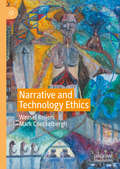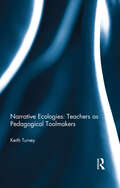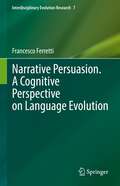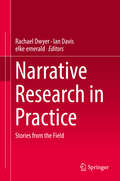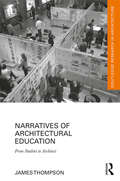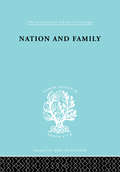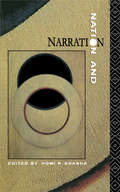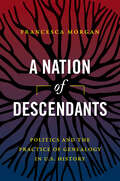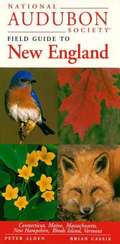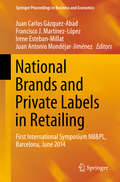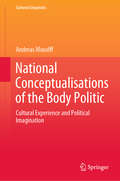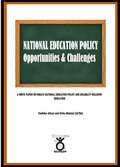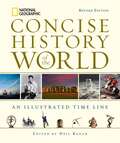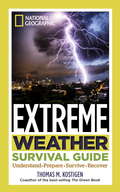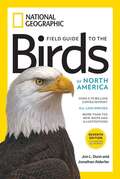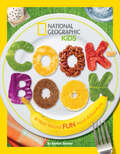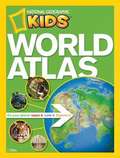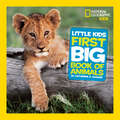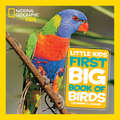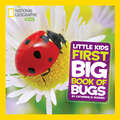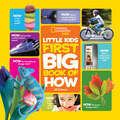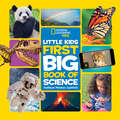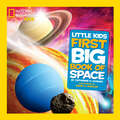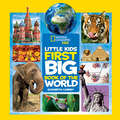- Table View
- List View
Narrative and Technology Ethics
by Wessel Reijers Mark CoeckelberghThis book proposes that technologies, similar to texts, novels and movies, ‘tell stories’ and thereby configure our lifeworld in the Digital Age. The impact of technologies on our lived experience is ever increasing: innovations in robotics challenge the nature of work, emerging biotechnologies impact our sense of self, and blockchain-based smart contracts profoundly transform interpersonal relations. In their exploration of the significance of these technologies, Reijers and Coeckelbergh build on the philosophical hermeneutics of Paul Ricouer to construct a new, narrative approach to the philosophy and ethics of technology. The authors take the reader on a journey: from a discussion of the philosophy of praxis, via a hermeneutic notion of technical practice that draws on MacIntyre, Heidegger and Ricoeur, through the virtue ethics of Vallor, and Ricoeur’s ethical aim, to the eventual construction of a practice method which can guide ethics in research and innovation. In its creation of a compelling hermeneutic ethics of technology, the book offers a concrete framework for practitioners to incorporate ethics in everyday technical practice.
Narrative Ecologies: Teachers As Pedagogical Toolmakers
by Keith TurveyIn recent years there has been significant investment by policy makers in the potential of technological tools to transform learning and teaching across a range of professional practitioner groups; education, nursing and social care. There remain, however, outstanding issues concerning the ways educators and professional practitioners harness the p
Narrative Persuasion. A Cognitive Perspective on Language Evolution (Interdisciplinary Evolution Research #7)
by Francesco FerrettiThis book explores the evolutionary and cognitive foundations of human communication, focusing on narrative as its distinctive dimension. Within a framework of continuity with both the communication of our hominin predecessors and that of non-human animals, the book is about a twofold proposal. It includes the idea that (human and animal) communication has an intrinsically persuasive nature along with the hypothesis that humans developed narrative forms of communication in order to enhance their persuasive abilities. In this view, narrative persuasion becomes the feature that distinguishes human communication from animal communication. The study of the transition from animal communication to language addresses both the selective pressures that led communication for persuasive purposes to take a narrative form and the cognitive architectures and expressive systems that enabled our ancestors to cope with the selective pressures of persuasive/narrative-based communication. Language evolution is interdisciplinary, even from the specific perspective of evolutionary pragmatics chosen here. Therefore, this book is intended for researchers working in fields such as cognitive sciences, philosophy, evolutionary biology, cognitive psychology, and primatology. It also represents a valuable resource for advanced students in cognitive sciences, linguistics, and philosophy.
Narrative Research in Practice
by Rachael Dwyer Ian Davis Elke EmeraldThis book directly addresses the multiplicity and complexity of narrative research by illustrating a variety of avenues to pursuing and publishing research that falls under the umbrella of narrative work. The chapters are drawn from a wide range of disciplines including education, literary studies, cultural studies, music and clinical studies. Each chapter considers a particular methodological issue or approach, illustrating how it was addressed in the course of the research. Each of the chapters concludes with a set of discussion exercises and a further reading list. The book offers a valuable resource for established researchers seeking to expand their methodological and theoretical repertoire, and for graduate students and researchers new to narrative methods.
Narratives of Architectural Education: From Student to Architect (Routledge Research in Architecture)
by James ThompsonNarratives of Architectural Education provides an overview of life as an architecture student, detailing how a layperson may develop an architectural identity. This book proposes becoming an architect as a personal narrative of professional development structured around various stages and challenges associated with identity transformation. Using a case study of aspiring architects along multiple time points of their professional education, Thompson investigates the occupational identity of architects; how individuals construct a sense of themselves as future architects and position themselves within the architectural community. This book provides previously unexamined insights into not just the academic development of an architect, but also the holistic and experiential aspects of architectural education. It would be ideal for those in the educational field of architecture, to include students, educators, interns, and mentors.
Nation and Family (International Library of Sociology)
by Alva MyrdalThis is Volume XIV out of fifteen on a series of the Sociology of Gender and the Family. Originally published in 1945, this study shows the Swedish Experiment in democratic family and population policy.
Nation & Narration
by Homi K BhabhaBhabha, in his preface, writes 'Nations, like narratives, lose their origins in the myths of time and only fully encounter their horizons in the mind's eye'. From this seemingly impossibly metaphorical beginning, this volume confronts the realities of the concept of nationhood as it is lived and the profound ambivalence of language as it is written. From Gillian Beer's reading of Virginia Woolf, Rachel Bowlby's cultural history of Uncle Tom's Cabin and Francis Mulhern's study of Leaviste's 'English ethics'; to Doris Sommer's study of the 'magical realism' of Latin American fiction and Sneja Gunew's analysis of Australian writing, Nation and Narration is a celebration of the fact that English is no longer an English national consciousness, which is not nationalist, but is the only thing that will give us an international dimension.
A Nation of Descendants: Politics and the Practice of Genealogy in U.S. History
by Francesca MorganFrom family trees written in early American bibles to birther conspiracy theories, genealogy has always mattered in the United States, whether for taking stock of kin when organizing a family reunion or drawing on membership—by blood or other means—to claim rights to land, inheritances, and more. And since the advent of DNA kits that purportedly trace genealogical relations through genetics, millions of people have used them to learn about their medical histories, biological parentage, and ethnic background. A Nation of Descendants traces Americans' fascination with tracking family lineage through three centuries. Francesca Morgan examines how specific groups throughout history grappled with finding and recording their forebears, focusing on Anglo-American white, Mormon, African American, Jewish, and Native American people. Morgan also describes how individuals and researchers use genealogy for personal and scholarly purposes, and she explores how local businesspeople, companies like Ancestry.com, and Henry Louis Gates Jr.'s Finding Your Roots series powered the commercialization and commodification of genealogy.
National Audubon Society Regional Guide To New England
by Peter Alden National Audubon Society StaffFilled with concise descriptions and stunning photographs, the National Audubon Society Field Guide to New England belongs in the home of every New England resident and in the suitcase or backpack of every visitor. This compact volume contains: An easy-to-use field guide for identifying 1,000 of the region's wildflowers, trees, mushrooms, mosses, fishes, amphibians, reptiles, birds, butterflies, mammals, and much more; A complete overview of New England's natural history, covering geology, wildlife habitats, ecology, fossils, rocks and minerals, clouds and weather patterns and night sky; An extensive sampling of the area's best parks, preserves, beaches, forests, islands, and wildlife sanctuaries, with detailed descriptions and visitor information for 50 sites and notes on dozens of others. The guide is packed with visual information -- the 1,500 full-color images include more than 1,300 photographs, 14 maps, and 16 night-sky charts, as well as 150 drawings explaining everything from geological processes to the basic features of different plants and animals. For everyone who lives or spends time in Connecticut, Maine, Massachusetts, Rhode Island, New Hampshire, or Vermont, there can be no finer guide to the area's natural surroundings than the National Audubon Society Field Guide to New England.
National Bibliography of Indian Literature: Second Series (1954-2000)
by K. M. Govi Z. A. BurneyListing of all publications of literary merit and works of abiding value coming under the purview of humanities from the beginning of the year 1901 to end of 1953 in the first volume and from beginning of 1954 to end of 2000 in the second volume.
National Brands and Private Labels in Retailing
by Juan Carlos Gázquez-Abad Francisco J. Martínez-López Irene Esteban-Millat Juan Antonio Mondéjar-JiménezThis book presents latest findings on brand marketing in retail. In times of economic downturn a "new retailing landscape" is being shaped, in which retailers and manufacturers face new challenges to their brand strategies. Marketing professionals need high value-added and timely responses. Among the topics targeted in this volume are: mix of national brands and private labels in retailers' assortments; assortment decisions in times of economic crisis and eventual recovery; consequences of delisting brands on store-related aspects; delisting manufacturers' brands and the effects on the distribution channel relationship; the new "retailing landscape", with special focus on fast moving consumer goods retailing; consumer preferences for national brands and private labels and many more.
National Conceptualisations of the Body Politic: Cultural Experience and Political Imagination (Cultural Linguistics)
by Andreas MusolffThis book presents the results of a large-scale experiment into interpretations of the metaphor “the Nation as a Body” among 1,800+ respondents from 30 linguistic and cultural backgrounds. In this first account of an empirical study of cross-cultural global metaphor interpretation of that scale, Musolff confirms that the meanings of metaphors are complex, culturally mediated and may differ for senders and recipients. The book provides a historical and cultural map of the traditions underlying differences in how the nation as a body – or, “the body politic” – is understood. Musolff challenges the hypotheses of the universality of “the nation” as a predominantly male-gendered and hierarchically organized concept and, in so doing, puts into question some of the key presuppositions of traditional historical and cognitive approaches to metaphor. For scholars and students of figurative language, the book lays out methodological foundations for cross-cultural metaphor comparison and reveals hidden meaning differences in political metaphor in English as lingua franca.
National Education Policy - Opportunities & Challenges: A White Paper on India’s National Education Policy and Disability Inclusive Education
by National Centre for Promotion of Employment for Disabled PeopleThis white paper addresses the need for inclusive education in India, considering the New Education Policy (2020) and policy milestones such as the UN Convention on the Rights of Persons with Disabilities (UNCRPD) and the Rights of Persons with Disabilities Act (2016). It highlights challenges, including low enrollment rates, gender disparities, lack of policy guidance on special schools, and inadequate training for teachers. Recommendations include strengthening policy implementation, increasing enrollment rates, addressing gender disparities, developing a comprehensive policy framework for special schools, improving teacher training and selection, maintaining infrastructure standards, increasing budgetary allocations, and expanding funds for a wider range of educational needs. Implementing these recommendations will promote an inclusive education system in India, empowering children with disabilities and ensuring equal opportunities.
National Geographic Concise History Of The World: An Illustrated Time Line
by Neil KaganFrom the dawn of humankind to today's global complexities, this monumental volume presents world history from an original perspective that provides fresh insights with every colorful spread. Few references are as invaluable, all-inclusive, and satisfying to browse. For readers of all ages, world history is easily accessible, depicted as never before―so that events occurring simultaneously around the world can be viewed at-a-glance together. For example, Texas Instruments launched the pocket calculator the same year the Soviet Union launched the first manned space station, in 1971. Columbus sailed from Spain the year Martin Behaim constructed a terrestrial globe in Nuremberg. The California Gold Rush followed the Irish Potato Famine in the 1840s, and the Greek dictatorship of Papadopoulos is overthrown the same year Emperor Haile Selassie of Ethiopia is deposed and U.S. president Nixon resigns, in 1974. The book's innovative time line truly sets it apart, allowing readers to scan across a spread and explore a single area or compare contemporary societies across the globe. This remarkable resource also contains dozens of maps; scores of sidebars; hundreds of illustrations; and thousands of events, milestones, personalities, ideas, and inventions. Throughout, vivid illustrations depict artworks, artifacts, portraits and dramatic scenes, while sidebar topics range from local customs and lifestyles to the effect of climate change on human migration. Drawing on National Geographic's vast resources, this concise yet comprehensive, one-of-a-kind work is as rewarding as it is compulsively readable.
National Geographic Extreme Weather Survival Guide: Understand, Prepare, Survive, Recover
by Thomas M. KostigenFrom the risks of building on changing coastlines to the safety kit you should have packed up at home, from the telltale signs of a hurricane on the horizon to how to power up when the grid goes down - this will be the one book to carry with you through all kinds of bad weather. Divided into four sections (Hot, Cold, Wet, Dry) each chapter includes a level-headed discussion of current weather extremes, facts and details on conditions, and theories for why these changes are occurring; dos and don'ts for inside and outside; and gives at-a-glance guidance for how to prepare for, survive, and recover from every extreme. Sidebar features include: gears and gadgets; protecting your pet; and firsthand accounts from survivors and the experts who help them. Spectacular photographs of wicked weather plus useful checklists and how-to illustrations make page after page both useful and entertaining, even when you're contemplating the unthinkable.
National Geographic Field Guide To The Birds Of North America, 7th Edition
by Jonathan AlderferThis fully revised edition of the best-selling North American bird field guide is the most up-to-date guide on the market. Perfect for beginning to advanced birders, it is the only book organized to match the latest American Ornithological Society taxonomy. With more than 2.75 million copies in print, this perennial bestseller is the most frequently updated of all North American bird field guides. Filled with hand-painted illustrations from top nature artists (including the ever-popular hummingbird), this latest edition is poised to become an instant must-have for every serious birder in the United States and Canada. The 7th edition includes 37 new species for a total of 1,023 species; 16 new pages allow for 250 fresh illustrations; 80 new maps; and 350 map revisions. With taxonomy revised to reflect the radical new American Ornithological Society taxonomy established in 2016, the addition of standardized banding codes, and text completely vetted by birding experts, this new edition will top of the list of birding field guides for years to come.
National Geographic Kids Cookbook: A Year-Round Fun Food Adventure
by Barton SeaverJoin Barton Seaver—master chef and National Geographic Explorer—on a year-round culinary adventure as he explores what it takes to create the ultimate dish. Barton provides mouthwatering recipes, the ins and outs of healthy eating, awesome crafts and activities, and food-focused challenges, proving once and for all that cooking can be a blast. Follow along as he teaches you to plant a kitchen garden, host a dinner party for your friends, and pack the perfect school lunch. Other highlights include ways to play with your food, festive holiday meals, snow day snacks, and family cooking competitions. With fascinating sidebars, profiles on real people, and cool facts, the National Geographic Kids Cookbook will have you ruling the kitchen in no time!
National Geographic Kids World Atlas for Young Explorers, Third Edition
by National Geographic SocietyThis edition of National Geographic's award-winning "World Atlas for Young Explorers" includes more than 200 color images and 115 pages of full-size maps help kids locate countries, cities, regions, and more.
National Geographic Little Kids First Big Book of Animals (National Geographic Little Kids First Big Books)
by Catherine D. HughesThe National Geographic Little Kids First Big Book of Animals is an adorable animal reference sure to be welcomed by parents and librarians alike. Filled with fluffy and scaly creatures big and small, this appealing book introduces the youngest explorers to the world of wildlife, using a child-friendly format inspired by the blockbuster National Geographic Little Kids magazine. This exciting new reference for the very young mirrors the magazine&’s square shape, readable fonts, and fun content, to keep little ones thrilled with every colorful page.Little Kids First Big Book of Animals devotes four pages each to 32 high-interest creatures, including dolphins, tigers, butterflies, frogs, penguins, wolves, and pandas. More than 150 of National Geographic&’s most charming animal photos illustrate the profiles, which feature just the kind of facts that little kids want to know—the creature&’s size, diet, home, and more.Child-friendly text explains how animal parents take care of their young, how baby animals change as they grow, and how they learn to hunt and eat. The brief text, large type, and appealing profiles are perfect for young readers to enjoy on their own, or for parents and other caregivers to read aloud. These animal tales will quickly become favorites at storytime, bedtime, and any other time.
National Geographic Little Kids First Big Book of Birds (National Geographic Little Kids First Big Books)
by Catherine D. HughesThis adorable reference introduces young readers to birds of all kinds: big and small, flyers and swimmers, colorful and plain. They&’ll find backyard favorites, such as robins and cardinals and be introduced to more unique species that inhabit rain forests and deserts around the world. Bird behaviors kids can relate to, including singing, dancing, building, swimming, and diving, reveal fascinating insights into the avian world. More than 100 colorful photos are paired with profiles of each bird, along with facts about the creatures' sizes, diets, homes, and more. This charming book will quickly become a favorite at storytime, bedtime, and any other time.
National Geographic Little Kids First Big Book of Bugs (National Geographic Little Kids First Big Books)
by Catherine D. HughesThe experts at National Geographic present a delightful reference that introduces young children to bugs of all kinds: big and small, jumping and crawling, colorful and creepy. This charming book explores backyard favorites, such as ladybugs and lightning bugs, and introduces kids to more exotic species that inhabit rain forests and deserts around the world. Colorful photos are paired with profiles of each insect, along with facts about the creatures' sizes, diets, homes, and more. This book will quickly become a favorite at storytime, bedtime, and any other time!
National Geographic Little Kids First Big Book of How (National Geographic Little Kids First Big Books)
by Jill EsbaumThis charming reference book answers questions kids ask every day, taking a closer look at the things that surround them and how they work—from cars to vacuum cleaners, storms to seasons, animal bodies to humans. More than 100 colorful photos are paired with age-appropriate text featuring answers to questions like "How do chameleons change color?" "How do refrigerators stay cold?" "How do tornadoes form?" "How do submarines stay underwater?" "How does food get to the grocery store?" and "How does my body heal?" This book helps parents share fascinating, accurate answers, and inspires kids to be curious, ask questions, and explore the world around them. Games and parent tips encourage interactivity and extend the experience of the book beyond its pages.
National Geographic Little Kids First Big Book of Science (National Geographic Little Kids First Big Books)
by Kathleen ZoehfeldThis lively introduction to the fascinating world of science explores the different kinds of science, what scientists do, and the amazing things that scientists study: animals and plants; oceans and space; earthquakes and volcanoes; sound and light; inventions and more!Make sure kids' first experience of the wonders of science is a thrilling eye-opener with this fun reference book. Fun activities, games, and simple experiments encourage interactive learning, showing kids that anyone can use scientific observation and experimentation to be a scientist and discover new things. With bright images and age-appropriate text, this book inspires kids to be curious, ask questions, and explore the world around them and maybe even grow up to be a scientist one day, too! Topics include astronomy, botany, paleontology, malacology (that's the science of clams, snails, and other animals with shells!), zoology, and more.
National Geographic Little Kids First Big Book of Space (National Geographic Little Kids First Big Books)
by Catherine D. HughesGet ready to blast off on an outer space adventure! Featuring stunning illustrations and engaging interactivity, this reference book will tap into 4-to-8-year-olds' curiosity about everything under the sun and beyond.This beautiful book is the latest addition to the National Geographic Little Kids First Big Book series. These colorful pages will introduce young children to the wonders of space, with out-of-this-world illustrations by David Aguilar and simple text that is perfect for beginning readers or for reading aloud. The book will explain basic concepts of space, beginning with what is most familiar to kids and expanding out into the universe.Chapters include: • Chapter 1 focuses on the Earth, moon, and sun. • Chapter 2 introduces kids to the other planets in our solar system. • Chapter 3 explains other objects in our solar system, such as dwarf planets, comets, and asteroid belts. • Chapter 4 voyages even farther afield, touching on concepts such as the universe, the Milky Way, stars, galaxies, and black holes. • The last chapter delves into space exploration: humans on the moon, spaceships, the International Space Station, etc.
National Geographic Little Kids First Big Book of the World (National Geographic Little Kids First Big Books)
by Elizabeth CarneyThis charming reference introduces young readers to the wider world by exploring languages, landscapes, weather, animals, capital cities, mountains, deserts, and other landscapes and landforms, and more. It encourages kids to get play with activities such as creating a mini-rainforest in a bottle and singing a simple song in Spanish. More than 100 colorful photos are paired with kid-friendly and age-appropriate maps along with basic facts about each continent. This book will quickly become a favorite at storytime, bedtime, or any other time.
